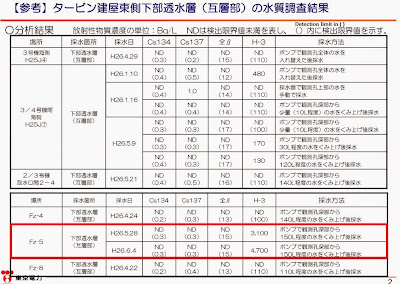If that's the case, Japan's Monju should be learning from Russians, not from French.
What reads like an official PR piece, from RT (6/27/2014):
Fast reactor starts clean nuclear energy era in Russia
Controlled nuclear fission has been started in Russia’s newest fast breeder reactor in the Urals, heralding a closed nuclear fuel cycle and a future without nuclear waste. Russia is the only country that operates fast neutron reactors industrially.
The next generation BN-800 breeder reactor (880 megawatts) assembled at Russia’s Beloyarskaya nuclear power plant has been put in the so-called critical state on Friday, a week after all necessary nuclear fuel was loaded into the active zone.
The press service of Rosenergoatom, the electric energy generation branch of Russia’s nuclear monopoly, Rosatom, has confirmed to the RIA news agency that nuclear reaction in the BN-800 reactor has been initiated.
“Starting from that moment the reactor started to ‘live’,” RIA said, quoting the source in Rosenergoatom.
This means that controlled nuclear fission in the reactor is self-sustaining and ongoing at a constant speed. Once this most important stage of the start-up work is done, the reactor will be gradually prepared to achieve the desired 880 megawatts output expected to be reached in October, when the reactor will be commissioned for industrial use.
The BN-800 uses liquid metal sodium (Na) as a coolant heat transfer agent. The start of commercial operation of the new reactor is planned for early 2015.
Service life of the BN-800 breeder reactor is expected to be 45 years. Every month it will produce 475 million kilowatt hours of electricity, enough to ensure constant supply to 3.15 million families (considering that the average monthly consumption of a family of three is 150 kilowatt hours).
Beloyarskaya nuclear power plant is situated in Zarechny, some 45 kilometers from the regional center of Yekaterinburg, in the Urals region.
The fast-neutron nuclear reactors use so-called breeder reactor technology that enables the use of a wider range of radioactive elements as fuel, thus considerably enlarging the potential stock of nuclear fuel for electricity generation.
Fast fission reactors close the question of potentially ending uranium nuclear fuel as they could ‘burn’ even nuclear waste.
Besides producing electric energy, it generates more fissile material that can be used as nuclear fuel. This brings us to the closed nuclear fuel cycle, a long-lasting dream of the nuclear energy industry that appears to have come true.
Unlike ‘traditional’ nuclear reactors that use assemblies of uranium-235 as the principal fuel, breeder reactors use specially designed MOX (Mixed Oxide) fuel based on plutonium-239.
Russia’s nuclear monopoly, Rosatom, is finishing a plant in Krasnoyarsk region that will produce MOX fuel for the BN-800 reactor. The production line is assembled in a mine 200 meters underground. This will be operable by the end of 2014, and, starting from 2016, it will be running at full capacity.
Russia has unique experience of operating fast reactors, although the first one, CLEMENTINE, was constructed in the US in 1946 at Los Alamos National Laboratory.
Over the decades, the USSR, then Russia, introduced a number of industrial and research fast neutron reactors. One of them, the BN-600 (600 megawatt), since 1980 running at the same Beloyarskaya nuclear power plant, is the only fast neutron reactor in the world that generates electricity on industrial scales. The BN-600 is also the most powerful operable fast neutron reactor in the world.
After decades of research, practically all breeder reactor projects around the world, including in the US, France, Japan and several other countries possessing nuclear energy technologies are now closed down. The only country that currently possesses operating breeder reactor power generation is Russia.
Russian physicists have already elaborated the next step for the revolutionary technology: a BN-1200 breeder reactor that is set to be assembled at the same Beloyarskaya nuclear power plant by 2020.
Overall, eight BN-1200 breeder reactors are expected to be constructed by 2030, which means that Russia is the only nation that is entering a new era of nuclear energy power generation – a truly clean and ecologically secure closed nuclear fuel cycle.
BN-800 on wiki:
The BN-800 reactor will be a sodium-cooled fast breeder reactor, under construction now at the Beloyarsk Nuclear Power Station, in Zarechny, Sverdlovsk Oblast, Russia. Designed to generate electrical power of 880 MW in total, the plant will be the final step to the commercial plutonium cycle breeder. It is assumed to start by the end of 2014. By now (2014 June) reactor start-up is in progress.
The plant will be a pool-type reactor, where the reactor, coolant pumps, intermediate heat exchangers and associated piping are all located in a common liquid sodium pool. The design of this plant was started in 1983 and was totally revised after the Chernobyl Disaster in 1987 and for somewhat lower degree in 1993 according to the new safety guidelines. After the second revision the electric output power was increased by 10% to 880 MW.
The reactor core is very much like in size and mechanical properties to the BN-600 reactor core, but differs very much in the fuel composition. While BN-600 uses medium-enriched uranium dioxide, the new plant will burn mixed uranium-plutonium fuel, helping to reduce the weapon-grade plutonium stockpile and provide information about the functioning of the closed uranium-plutonium fuel cycle. It was specially mentioned that the closed cycle will not require plutonium separation and other chemical processing.
The unit employs a three-circuit coolant arrangement; sodium coolant circulates in both the primary and secondary circuits. Water and steam flow in the third circuit. This heat is transferred from the reactor core via several independent circulation loops. Each comprises a primary sodium pump, two intermediate heat exchangers, a secondary sodium pump with an expansion tank located upstream, and an emergency pressure discharge tank. These feed a steam generator, which in turn supplies a condensing turbine that turns the generator.[1]






 Tokyo Time
Tokyo Time
![[Most Recent Quotes from www.kitco.com]](http://www.kitconet.com/charts/metals/gold/t24_au_en_usoz_2.gif)


